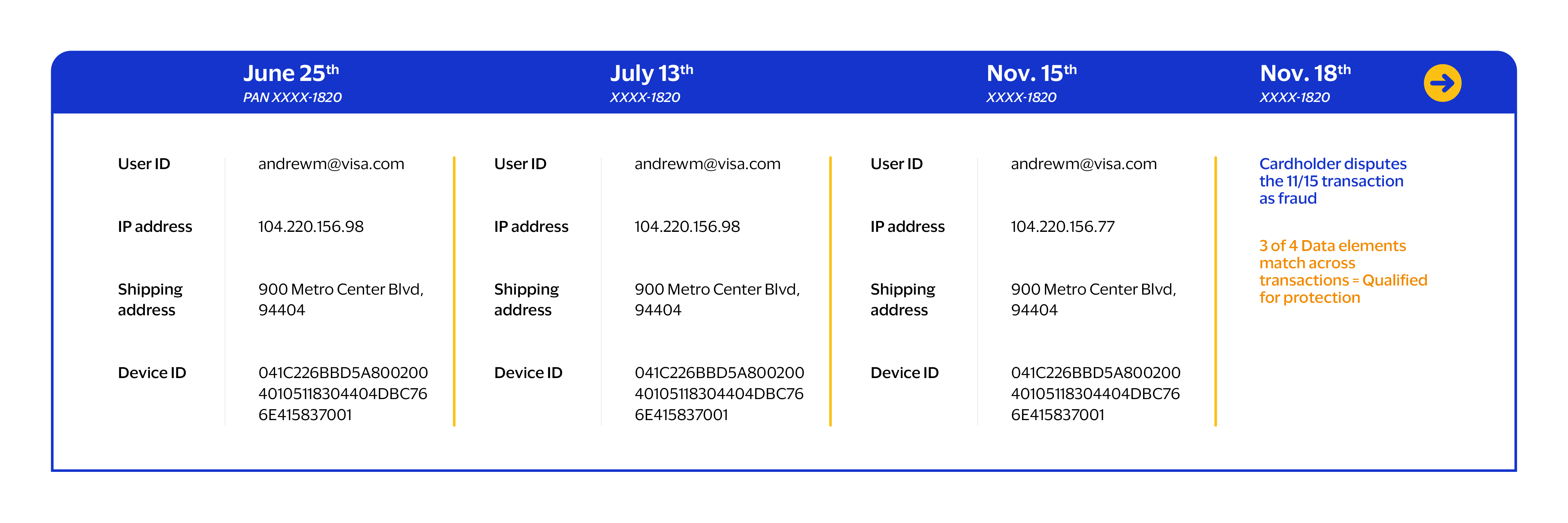
According to Visa internal reporting, friendly fraud can account for up to 75% of all chargebacks. “Friendly fraud is not always friendly, especially from a merchant’s perspective,” said Mike Lemberger, Senior Vice President of North America Risk at Visa.
The Fair Credit Billing Act of 1974 legislated the chargeback process to help protect consumers; but with the shift to a digital ecosystem, an opportunistic form of fraud against merchants is on the rise: first party misuse (sometimes referred to as friendly fraud, or first party fraud); which occurs when a cardholder disputes a legitimate intended purchase with their issuer. This includes customers refuting valid purchases such as long-forgotten recurring subscriptions, or children given access to use their parent’s card to make purchases with parental approval. As none of these purchases are considered unauthorized by the cardholder, the chargebacks negatively impact merchants in both cost and time spent responding to the false claim.
Rebalancing the Scales
Visa strives to reduce all types of fraud in the ecosystem and the introduction of Compelling Evidence 3.0 does just that. To relieve merchants of the burden of friendly fraud losses, starting on April 15, 2023, merchants will be able to better fight back against first party misuse.
Compelling Evidence 3.0 (CE3.0) evolves the Visa dispute program by adding a set of checks and balances to draw a clear and direct relationship between the merchant and the cardholder with the use of greater data exchange to more accurately identify transactions authorized by the cardholder, not an unauthorized third party. When CE3.0 takes effect, if merchants provide at least three of the following evidentiary data points: email address, shipping address, IP address, user login, and device ID/ device fingerprint; the liability shifts from the merchant to the Issuer, and the dispute is over.

Even with relief for friendly fraud disputes on the horizon, it’s important that a merchant do everything possible in the online environment to prevent friendly fraud by making sure customers and issuers know exactly what they purchased with as much crucial detail as possible.
Top Reasons for Friendly Fraud
- Transaction Confusion: This type of friendly fraud occurs when a cardholder does not recognize a transaction on their bank statement. Common reasons for this confusion relate to unrecognizable billing descriptors or simply forgetfulness.
- Attempt to Obtain Free Goods or Services: Commonly with larger purchases, this variation of friendly fraud occurs when a customer purchases a good or service with the full, usually pre-determined, intent to dispute the transaction.
- Family Fraud: Occurs when a dispute is submitted for a valid transaction that was made – either knowingly or unknowingly – by another family member, like a spouse or child.
- Quality of Goods Not as Expected: Seen commonly as buyer’s remorse, this type of friendly fraud occurs when a cardholder claims the product or service was not as expected, to receive free goods.
- Outside of Return Window: This type of friendly fraud occurs when a cardholder uses dispute protections to obtain a refund for products because they have either (1) failed to return products to the merchant in accordance with the merchant’s policy or, (2) been turned away directly by the merchant because the return window was missed.
Protecting Against Friendly Fraud
- Fraud prevention process during transaction
- Verify cardholder billing address and delivery address match
- Require card verification (CVV) codes
- Provide clear billing descriptors
- Include “doing-business-as” (DBA), if applicable
- Use customer support number in descriptor
- Use abbreviation if your business name is longer than 20 – 25 characters
- Provide clear, consistent communication
- Send detailed order confirmation to customers
- Be transparent about delivery detail
- Provide terms and conditions, return policy, and subscription or recurring information, if applicable
- Be proactive with customer outreach and solicit survey responses
- Analyze transaction trends
- Determine blacklist or exclusion list for customers who frequently file disputes
- Review dispute and purchasing trends to identify high risk product lines, business entities, countries, etc
- Maintain a simple and transparent return policy
- Utilize service providers to supply transparency and insight to transactions
An Ounce of Prevention
Compelling Evidence 3.0 rewards transparency in the post-purchase environment; but if transparency is baked into a merchant’s online strategy, unnecessary disputes have a better opportunity to be avoided before a cardholder even attempts to file a dispute.